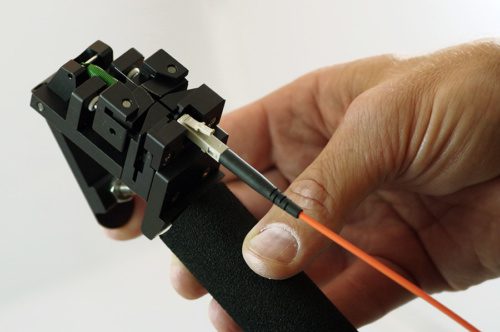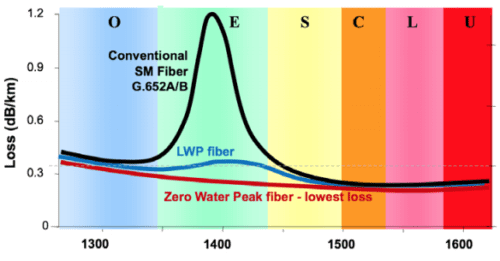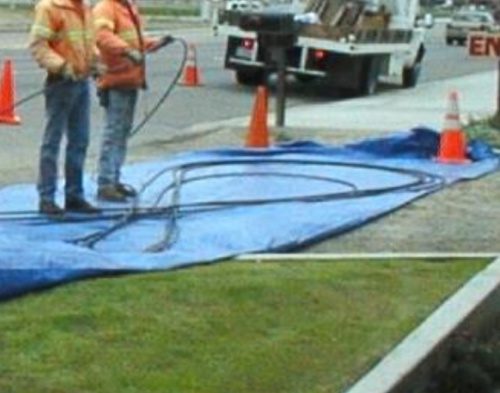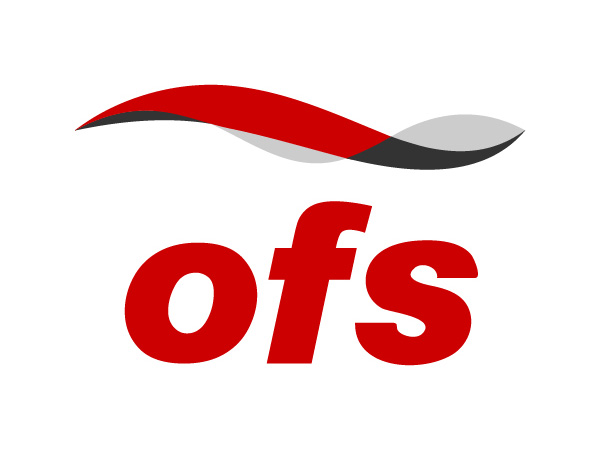
The Last 100 Meters of Fiber to and Into the Home
Leave a CommentThe Last 100 Meters of Fiber to and Into the Home
Tags: ez-bend, FTTx, invisilight, optical fiber
How Fiber Optic Cables are Made
Leave a CommentWe invite you on a tour of our fiber optic cable manufacturing facilities in Carrollton, Georgia, USA. View the highly automated OFS manufacturing process that produces a wide variety of fiber optic cables and products for telecommunications applications. Loose tube, microcables, flat ribbon, ADSS, ultra high density rollable ribbon cables and premise cables are all […]
Tags: fiber optic cables, optical fiber
HOW TO SPEAK “FIBER GEEK” | ARTICLE 5: CUT-OFF WAVELENGTH (COW)
Leave a CommentWELCOME BACK, FIBER GEEKS! The first Article in this series focused on growth in bandwidth demand and attenuation in optical fibers. Article 2 concentrated on the several types of dispersion that exist in fiber today, closely followed by Article 3 – Fiber strength and reliability. Article 4 featured single-mode fiber geometries and now the latest […]
Tags: optical fiber

Future Proof Your RDOF Investment
Leave a CommentMark Boxer discusses why fiber is the best option over wireless or satellite for RDOF deployment. OFS fiber services for RDOF award winners are positioned to build and deliver next-generation abilities to your customers.
Tags: rdof
HOW TO SPEAK “FIBER GEEK” | ARTICLE 4: SINGLE-MODE FIBER GEOMETRIES
Leave a CommentWELCOME BACK, FIBER GEEKS! The first Article in this series focused on growth in bandwidth demand and attenuation in optical fibers. Article 2 focused on several types of dispersion that exist in fiber, followed by Article 3 – Fiber strength and reliability. This article, the fourth in the series, will focus on single-mode fiber geometries. […]
HOW TO SPEAK “FIBER GEEK” | ARTICLE 2: DISPERSION
Leave a CommentWELCOME BACK, FIBER GEEKS! As a quick refresher, article 1 in this series focused on growth in bandwidth demand. We also looked at attenuation in optical fibers caused by factors external to the fiber e.g. bending, and built in attenuation mechanisms i.e. scattering and absorption. In this second article, we will focus on the several […]
Tags: chromatic dispersion, dispersion, modal dispersion, optical fiber, PMD
HOW TO SPEAK “FIBER GEEK” | ARTICLE 1: CRITICAL OPTICAL PARAMETERS – ATTENUATION
Leave a CommentThe fiber optic cable world has come a long way over the past 30 years. Products have become more rugged and user friendly, making it easier for people to enter the industry and work handling optical fiber and cable. While this is great for the industry, many people may understand the “how to” but not […]
Tags: absorption, attenuation, optical fiber, scattering

LC Crimp & Cleave Termination Instructions
Leave a Commentfor 50 and 62.5 µm GiHCS®, 200 µm HCS® LC Connectors Important Safety and Warranty Information Please Read First! Please make sure to READ and understand the termination instructions completely. Improper assembly will cause poor termination results and cause damage to termination kit components. Download the pdf document for the full instructions Make sure you […]
Tags: connectors, crimp and cleave, HCS fiber

A Focus on the Critical Optical Parameter Attenuation
Leave a CommentOur first article in this series highlighted some bandwidth demand drivers and introductory standards information. This article will focus on critical optical parameters starting with optical attenuation. Additional articles in this series focus on other optical parameters, including chromatic and polarization mode dispersion, splice loss, and an introduction to non-linear effects. > Download the Full […]
Tags: attenuation, optical fiber properties , Rayleigh scattering

Placing Fiber Optic Cable in Underground Plant
Leave a CommentPlacing Fiber Optic Cable in Underground Plant 1. Overview This document covers cable placing in conduit, innerduct, handholes, and manhole structures. The innerduct may be direct buried or placed in larger diameter conduits. In some applications, the innerduct may be lashed to an aerial strand. This document covers conventional cable placing techniques that are used […]
Tags: fiber optic cables

